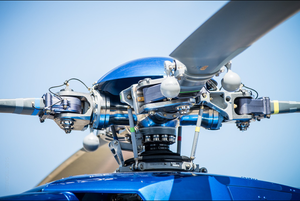C1U3 - High Fidelity Simulation of Rotating Parts
The aim is to create enable research in the direction of detailed flow field and aeroacoustics analyses of helicopters.
Do you want to request support from EXCELLERAT staff or consulting on this Use Case?
*Registration is required to send inquiries.
Description - engineer
High-order methods have the potential to overcome the current limitations of standard CFD solvers. For this reason, the spectral element code NEK5000 has been developed and improved for more than 30 years now. It features state-of-the-art, scalable algorithms that are fast and efficient on platforms ranging from laptops to the world’s fastest computers. Applications span a wide range of fields, including fluid flow, thermal convection, combustion and magnetohydrodynamics. Our user community includes hundreds of scientists and engineers in academia, laboratories and industry. For these reasons, CINECA proposes to test high-order numerical techniques for a modern industry application, a rotor aerodynamics problem. To evaluate the effectiveness maturity of the solver we started with testing a rotor aerodynamics reference case, extensively studied by several research groups using wind tunnel tests and PIV data acquisition (EFD) and with public CAD geometry: the HART-II test case: https://apps.dtic.mil/dtic/tr/fulltext/u2/a526789.pdf
Description - developer
To achieve successfully the test, a few challenges of the solver must be dealt with:
- The code is incompressible, each solver has a specific feature (AMR, low compressibility), but the combination of them is not available in a single solver
- Multi-block approach, each block must be “spectral”
- Each element is composed of a lot of points, just use as few elements as possible
- The initial grid must be conformal (nodes and faces on different blocks must match)
- Initial grid quality can be low, prenek can be run to smooth the mesh
- Final aspect ratio should not be higher than 10
- 2D cases need 3 points along the third dimension to enforce periodicity
The capabilities of open-source software gmsh for producing a hex-based mesh for the case were explored. The main goal was the proper representation of the wing surface and division of the computational domain into a set of subdomains suitable for SEM. Although gmsh is not a multi-block meshing tool and meshing requires considerable effort, it was found to be a useful tool for hex-based mesh generation. Using existing mesh converters and smoothers a complete workflow has been obtained and high-quality meshes adequate for high-order solver Nek5000 have been generated.
A new AMR solver was produced and merged in version 19 of Nek5000.
This use case was developed within the EXCELLERAT P1 project phase.

